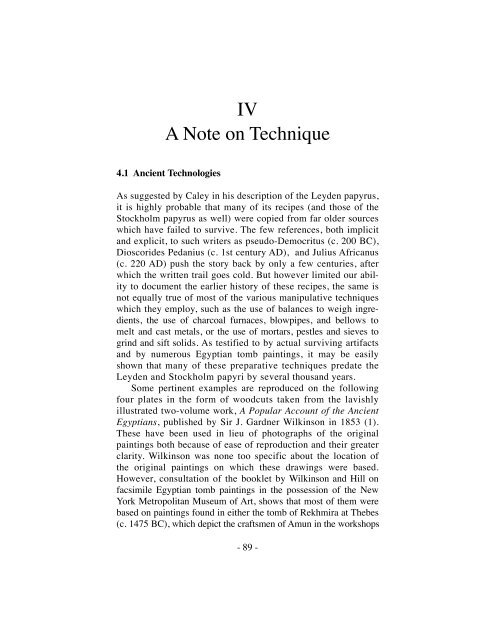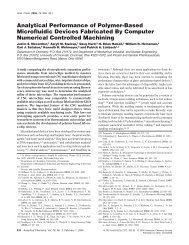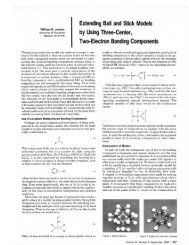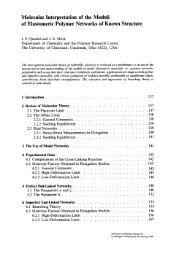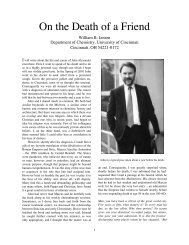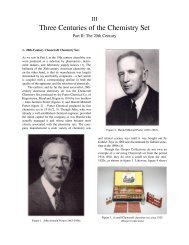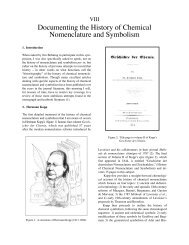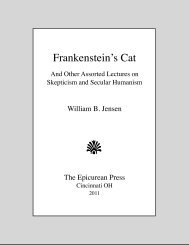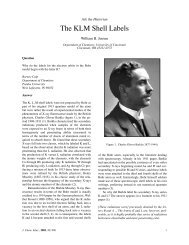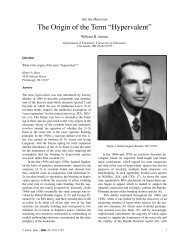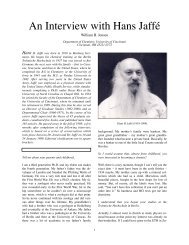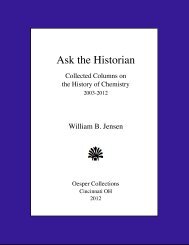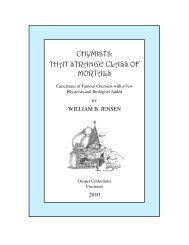The Leyden and Stockholm Papyri - University of Cincinnati
The Leyden and Stockholm Papyri - University of Cincinnati
The Leyden and Stockholm Papyri - University of Cincinnati
You also want an ePaper? Increase the reach of your titles
YUMPU automatically turns print PDFs into web optimized ePapers that Google loves.
IV<br />
A Note on Technique<br />
4.1 Ancient Technologies<br />
As suggested by Caley in his description <strong>of</strong> the <strong>Leyden</strong> papyrus,<br />
it is highly probable that many <strong>of</strong> its recipes (<strong>and</strong> those <strong>of</strong> the<br />
<strong>Stockholm</strong> papyrus as well) were copied from far older sources<br />
which have failed to survive. <strong>The</strong> few references, both implicit<br />
<strong>and</strong> explicit, to such writers as pseudo-Democritus (c. 200 BC),<br />
Dioscorides Pedanius (c. 1st century AD), <strong>and</strong> Julius Africanus<br />
(c. 220 AD) push the story back by only a few centuries, after<br />
which the written trail goes cold. But however limited our ability<br />
to document the earlier history <strong>of</strong> these recipes, the same is<br />
not equally true <strong>of</strong> most <strong>of</strong> the various manipulative techniques<br />
which they employ, such as the use <strong>of</strong> balances to weigh ingredients,<br />
the use <strong>of</strong> charcoal furnaces, blowpipes, <strong>and</strong> bellows to<br />
melt <strong>and</strong> cast metals, or the use <strong>of</strong> mortars, pestles <strong>and</strong> sieves to<br />
grind <strong>and</strong> sift solids. As testified to by actual surviving artifacts<br />
<strong>and</strong> by numerous Egyptian tomb paintings, it may be easily<br />
shown that many <strong>of</strong> these preparative techniques predate the<br />
<strong>Leyden</strong> <strong>and</strong> <strong>Stockholm</strong> papyri by several thous<strong>and</strong> years.<br />
! Some pertinent examples are reproduced on the following<br />
four plates in the form <strong>of</strong> woodcuts taken from the lavishly<br />
illustrated two-volume work, A Popular Account <strong>of</strong> the Ancient<br />
Egyptians, published by Sir J. Gardner Wilkinson in 1853 (1).<br />
<strong>The</strong>se have been used in lieu <strong>of</strong> photographs <strong>of</strong> the original<br />
paintings both because <strong>of</strong> ease <strong>of</strong> reproduction <strong>and</strong> their greater<br />
clarity. Wilkinson was none too specific about the location <strong>of</strong><br />
the original paintings on which these drawings were based.<br />
However, consultation <strong>of</strong> the booklet by Wilkinson <strong>and</strong> Hill on<br />
facsimile Egyptian tomb paintings in the possession <strong>of</strong> the New<br />
York Metropolitan Museum <strong>of</strong> Art, shows that most <strong>of</strong> them were<br />
based on paintings found in either the tomb <strong>of</strong> Rekhmira at <strong>The</strong>bes<br />
(c. 1475 BC), which depict the craftsmen <strong>of</strong> Amun in the workshops<br />
- 89 -


